Discliminar: This article is only for information purpose and we are not urging travellers to plan their holiday in Libya due to undergoing situations. The reasons are ongoing instability, which includes a long-terrorist activity, running military struggle, an uncertain political environment and also COVID-19. Don’t plan any trip to Libya before knowing the proper instructions given by the government.
There are many countries and cities in the world that are known for either ancient Roman ruins, Mayans or Byzantine ruins. The most popular one is Greece, Luxor, Malta, Peru, Cambodia etc. Similarly, Libya from Africa is another country known for its beautiful historical moments which belongs to the different ancient era. Its 5 UNESCO World Heritage sites have given Libya prominent recognition among history buffs throughout the world but its civils wars have changed the situations in past years.
Still, so let’s remove the curtain from this epic ancient African destination for our readers.
A Quick Brief on Libya
Libya is a country that belongs to Northern Africa and acknowledged for its longest Mediterranean coastline, empty beaches, civil wars stories, heritage structures. This beautiful land offers much to its fearless traveller. Its Mediterranean ambience is good and the gorgeous deserted landscape seizes the attention of many.

From the mysterious desert town of Ghadames to the breathtaking Sahara Desert, this is a land of ancient mountain paths and shimmering oases.
Dunes extend to the horizon, palm trees reflect in desert pools, and ancient rock carvings adorn the stunning Akakus Mountains. The wonderful aroma of spicy lentil soup and Benghazi seafood will surely water anybody tastebuds. Apart from this, in coastal cities like Tripoli and Benghazi of Libya, there are well-established modern buildings, good accommodation for staying, restaurants, cafes, culture and people with good market area.

Here for you, we are listing some most beautiful places in Libya as per the historical aspect as well as popular attractions that you can go through.
1. Tripoli
Tripoli is one of the most captivating cities of North African heritage. It is the capital city and the largest city in Libya. The city is situated on the outskirts of the desert, on a rock ledge that stretches into the Mediterranean and creates a harbour. Its twisting maze of backstreets combined the warmth, colourful and historic aura of the Mediterranean.
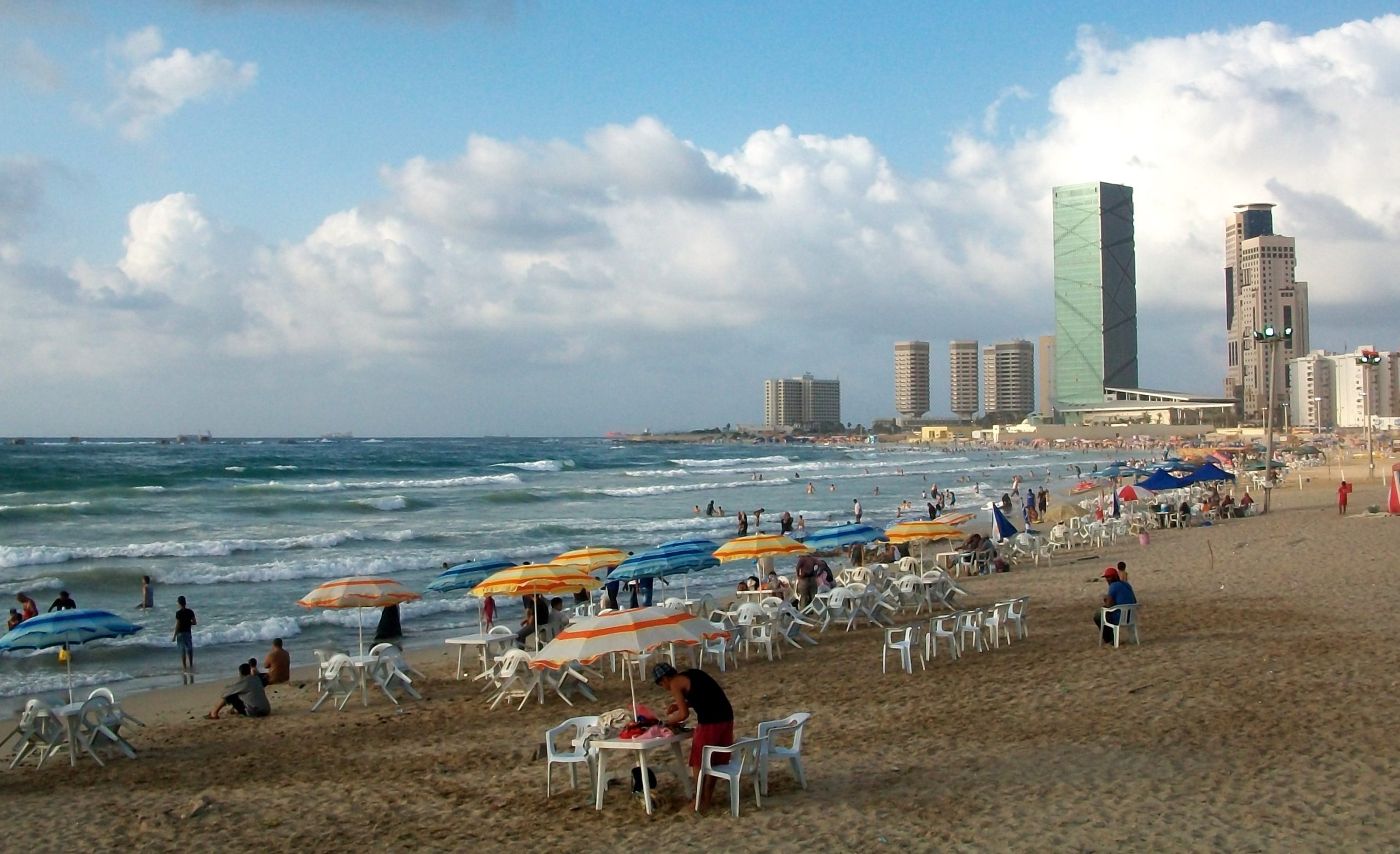
The grand Assaraya al-Hamra, which expands into the close lanes of the medina in a medley of mosque minarets and colossal Ottoman towers, is situated in the heart of town. Tripoli has much to offer, from spectacular Roman ruins to friendly locals and a glamorous seafront.
2. Leptis Magna
Leptis Magna was founded by the Phoenician Greeks and later given notable recognition by the Romans. It is the most impressive ancient site in the country. Although some of the ancient temples and peristyles have been moved to museums and parks in England.
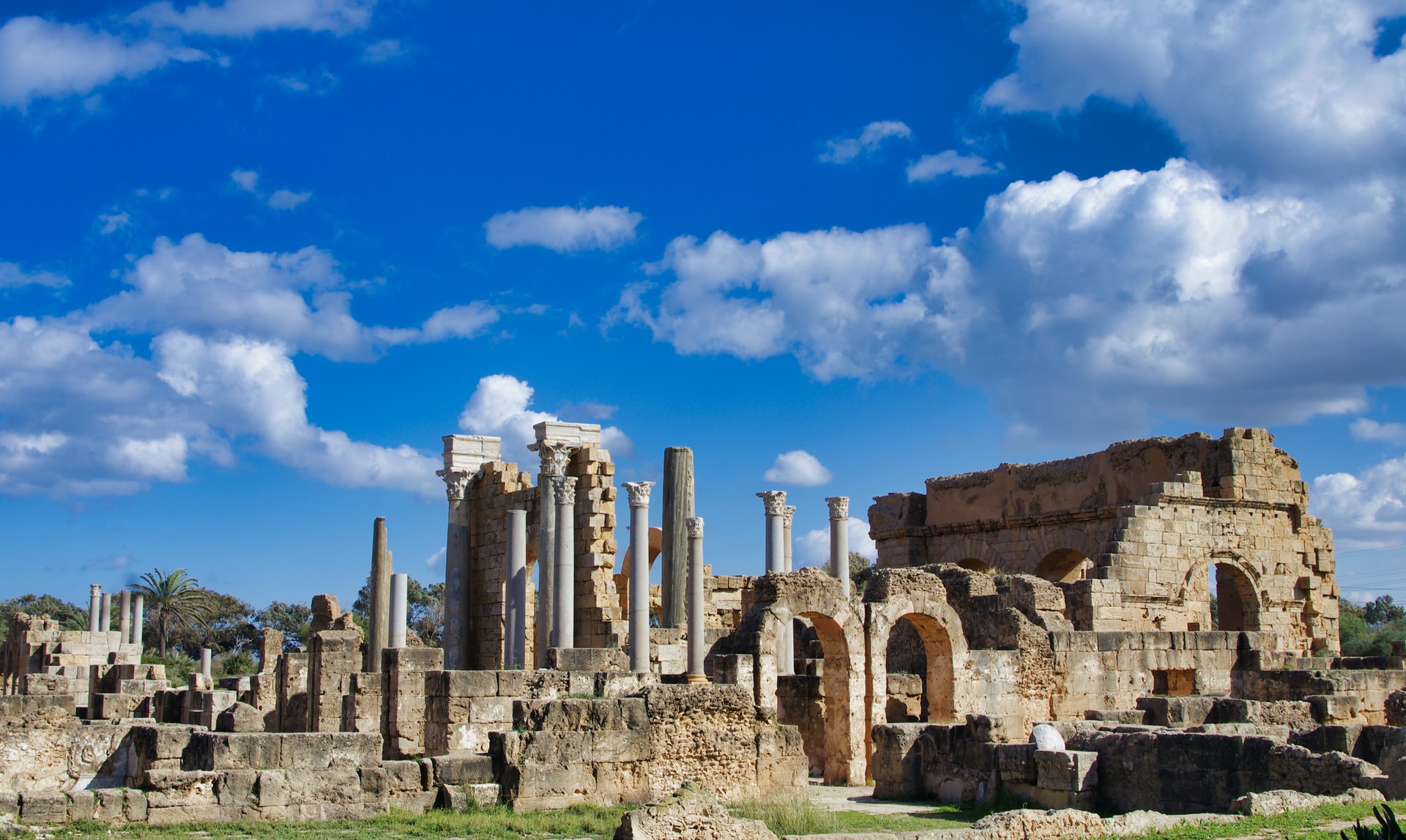
The grand theatre, Septimius Severus’ arches, the fortification walls, some early Roman basilicas, and the decaying marketplace have all survived. Leptis Magna was once the shining star of the Roman Empire nad now listed among the UNESCO World Heritage site list.
3. Cyrene
Cyrene was an ancient Greek and Roman city situated near the Libyan city of Shahhat. Cyrene, a mythical patchwork of temples and ancient townhouses perched atop Mediterranean cliffs in eastern Libya, is one of the most significant Greek ruins remaining in North Africa.
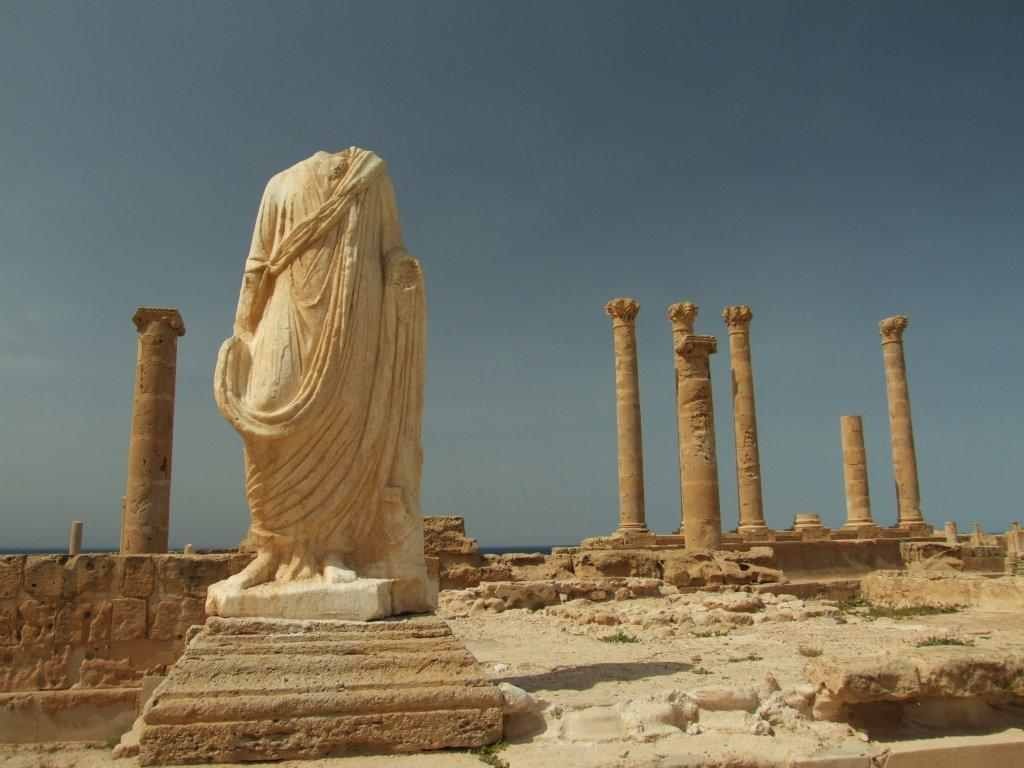
The city was once a flourishing commerce colony founded by Santorini’s seafarers, and it housed Hellenic traders, Alexander the Great’s descendants, and, later, Roman generals and armies. It has been abandoned after it was shattered by a major earthquake in the 4th century AD. The monumental shrines to Athena, the necropolis, and the sacred Sanctuary of Apollo all draw tourists attention.
4. Ghadames
In the heart of the desert-shrouded landscape, Ghadames is shinning among the travellers and the reason is the whitewashed homes that climb over one another. Meanwhile, winding alleyways lined with adobe walls tie back and forth across the medina making this location another UNESCO World Heritage Site in Libya.
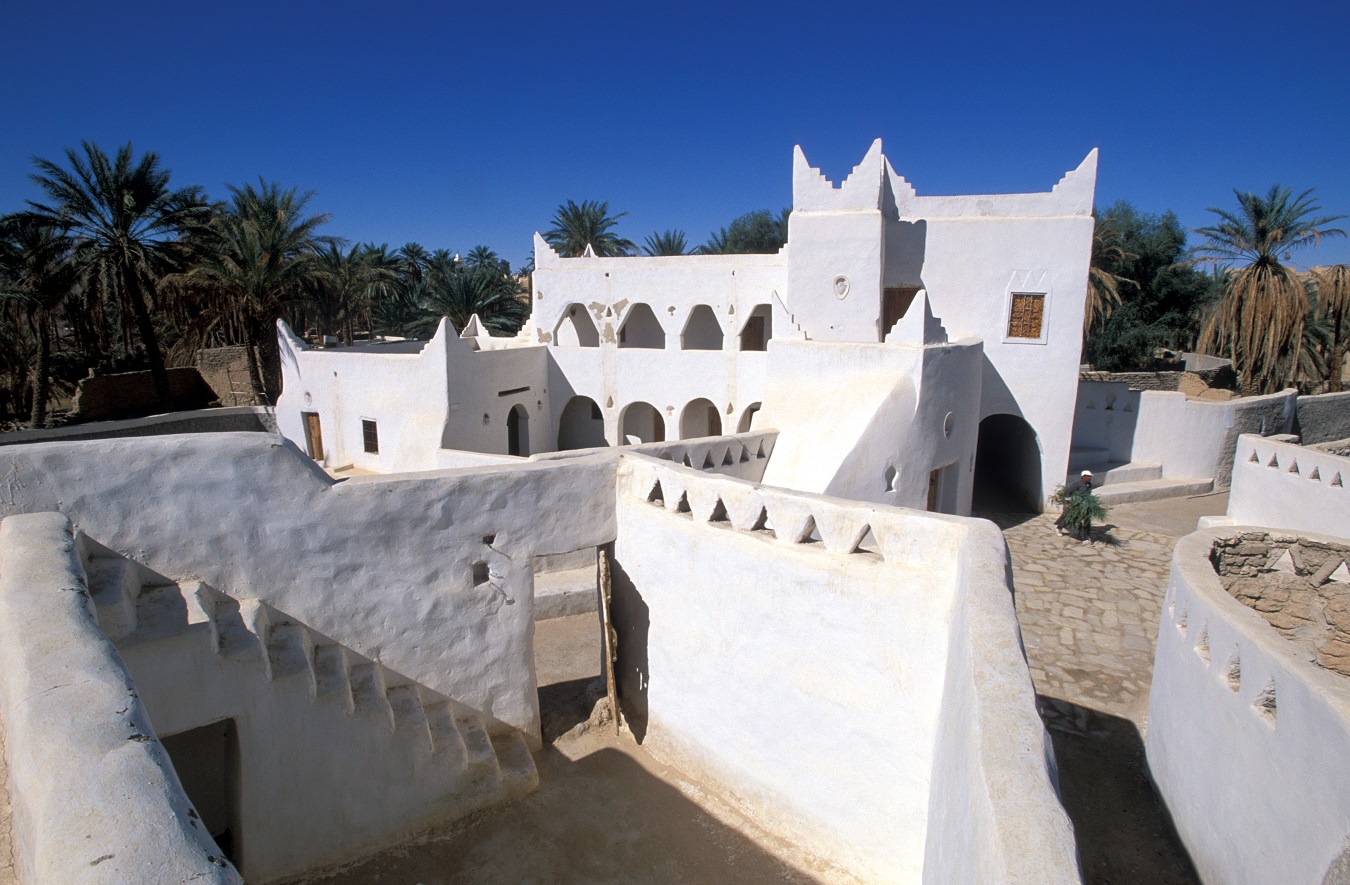
This earthy little Berber settlement is recognized as one of the true gems of the nation nestled between the dunes of the northern Sahara. Travellers come to see the palm-lined roads and shady terraces and to see a Libya that time has overlooked. This pre-Saharan town has also identified as the pearl of the desert.
5. Ghat
The landscape of bizarrely shaped desert mountains and innumerable rock carvings in Libya is situated in the Ghat. The Old City at Ghat Oasis, rugged caves and cliffs of the Acacus (Akakus) mountains are the major highlight of Ghat and thus lures travellers. Golden sand dunes cover the land and stick to the sides of the basaltic mountain range that rises sharply from the flat Sahara desert.
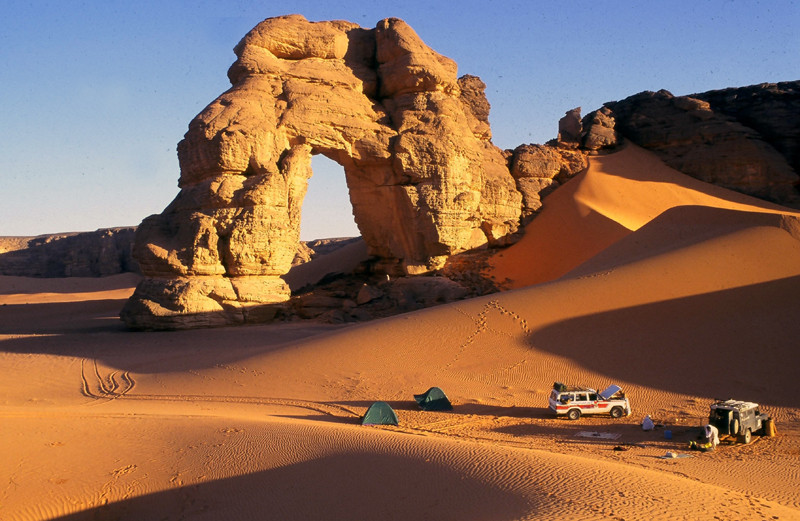
Thousands of desert winds have shaped the mountains into bizarre forms, with numerous natural arches crossing the foothills of the mountains. But it’s not the mountains, nor even the scenery for which this location is popular. Visitors and scientists flock to one of Libya’s most isolated corners for the various pictograms that can be found here.
Also Read: Cities Once Thrived, Lost and Re-discovered!
6. Sabratha
Sabratha is a former Greek colony on the North African coast. It started as a receptacle for Mediterranean goods arriving from the south, as well as a market for exotic African goods arriving from Sub-Saharan Africa. The entire city was taken over by the Romans, who constructed great temples for the local and imperial gods.
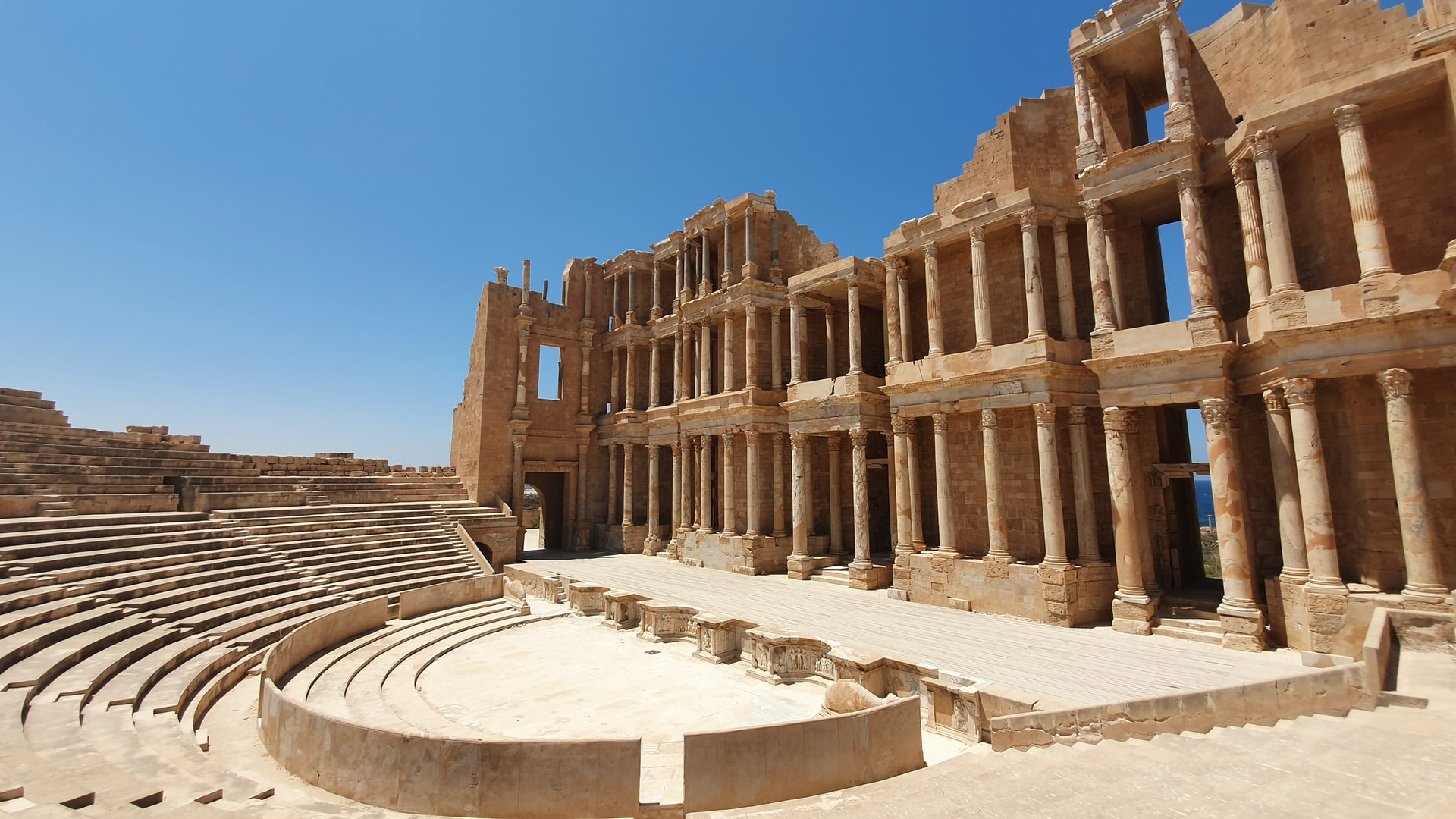
There are remains of the Christian basilica, also founded by Justinian, along with the wonderful mosaics that once decorated the interior. The piece of resistance is the ancient theatre that erupts from the desert in a sequence of Doric peristyles and arcades.
7. Waw a Namus
The black-stained tar and rock fields of Waw a Namus are a truly otherworldly sight to see, transporting us away from Libya’s war-torn cityscapes and ancient ruins for a spell of the strange and fantastic. The attraction, which is situated deep inside the Saharan Desert, is only recently becoming popular with adventurous travellers.
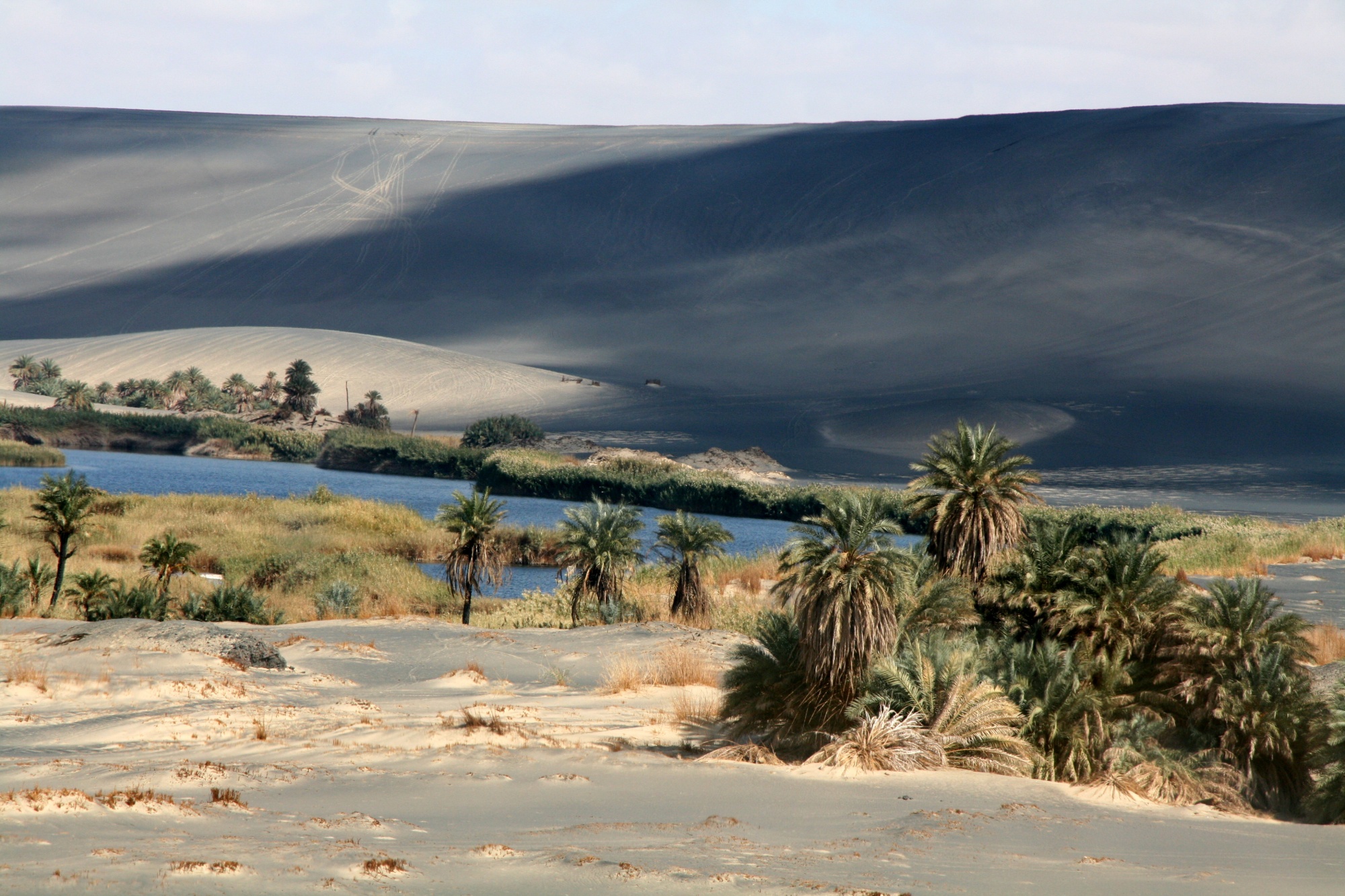
They visit the ancient caravan oases towns of Al Kufrah and Rebiana, as well as the great extinct volcanic cone that rises from the sands, its adjacent crater lake, and the great extinct volcanic cone that rises from the sands.
8. Al Jawf
In the centre of the Libyan Sahara, Al Jawf is framed by vast ochre sands. It’s a small town with low-rise adobe houses and camel-dotted streets that are full of potholes and uneven. While there isn’t anything to do in the city itself except enjoy the earthy Arabs feel, there is plenty to do in the nearby countryside. Al Jawf is the entrance to the Kufra basin, one of the region’s most strategically significant farming regions, known for its irrigation and alien-like crop circles.
9. Qasar Al-Haj
Qasar al-Haj is another ancient ruin of Libya maintaining its charm for more than 9 centuries. This ancient structure Qasr al-Haj the most stunning piece of Berber architecture in Libya gleaming in the landscape of the Sahara desert. Sheikh Abu Jatla founded the Qasr al-Haj in the 12th century, who rented the storage rooms in exchange for barley and wheat. This structure is not a fortified town nor a fortress.
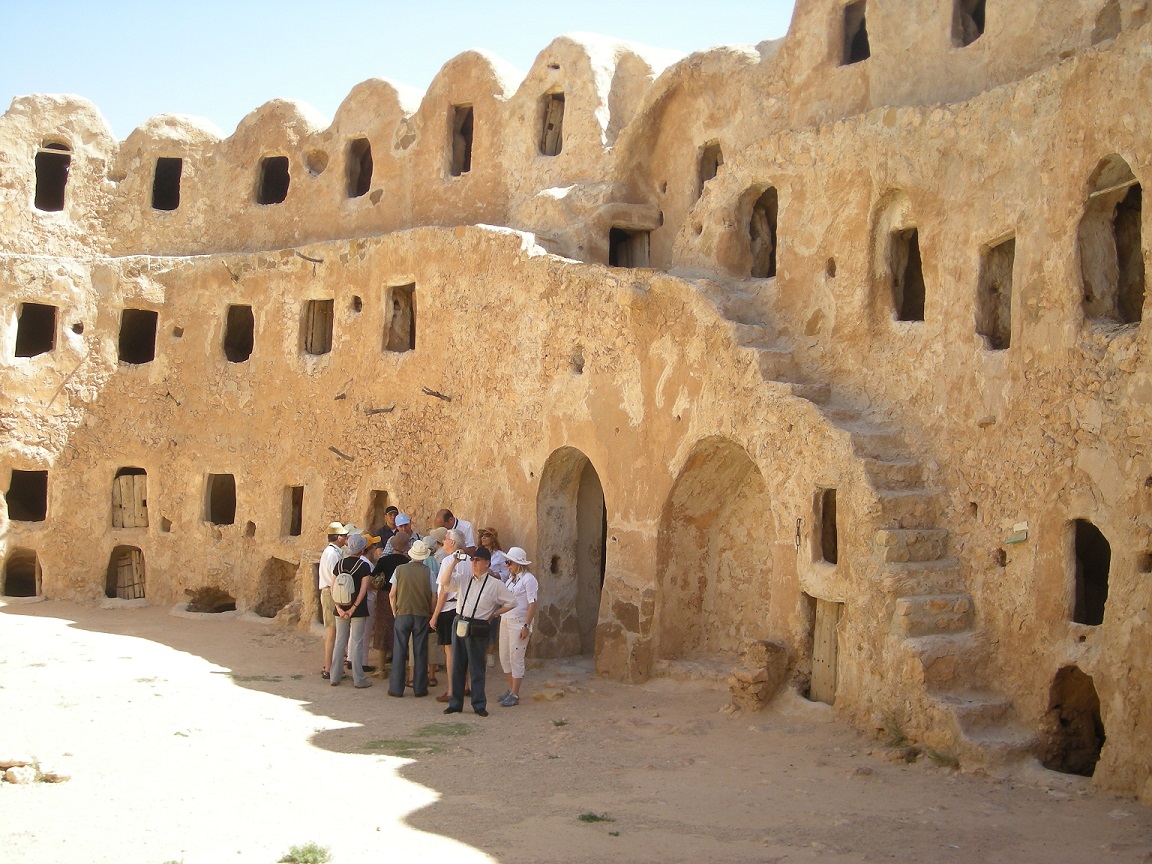
It acts as a storage facility for the semi-nomadic inhabitants of the area’s crops. It’s a circular structure with the main gate that leads to a wide courtyard with 114 cave-like storage rooms arranged on multiple levels within. However, Qasr al-Haj was destroyed later in the 2011 Libyan Civil War.
10. Arch of Marcus Aurelius
Arch of Marcus Aurelius is located in the Tarabulus city of Libya. This famous arch is the only fully standing structure that prevails from Roman-era Oea. The most notable exception after civil wars over the year is the Arch of Marcus Aurelius which is a fascinating structure that would have been central to the town’s Roman identity. It was built in honour of Emperor Marcus Aurelius and Lucius Verus and the triumphal arch was erected in large part to commemorate his recent victories over the Parthians. This structure was built almost entirely from marble and has a rectangular footprint.

**Follow these travel advisories given by travel.state.gov before planning the itinerary for Libya.
Concluding here, but I think we have mentioned all the aspects of Libya from a travel perspective. You won’t get bore here and will learn a lot from Libyan history and ancient cultures. Yes, this destination is offbeat from the rest of the travelling destinations remember that before any planning.

